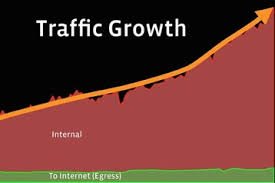How to Drive More Traffic with Effective SEO: A Complete Guide for Growth
In the competitive digital world, driving high-quality traffic to your website is essential for business growth. Whether you’re an eCommerce store, a blog, or a service-based business, SEO (Search Engine Optimization) is one of the most reliable ways to increase visibility and attract organic traffic.
But with SEO’s constantly evolving landscape, it can be challenging to know where to start and which strategies will truly make a difference. This guide will provide you with a step-by-step roadmap on how to drive more traffic to your website with effective SEO strategies, helping you achieve sustainable growth.
1. Start with Comprehensive Keyword Research
The foundation of any successful SEO strategy begins with keyword research. Keywords are the terms your potential customers are searching for, and understanding these keywords helps you create content that matches their intent. By targeting the right keywords, you can ensure your content is discoverable by search engines and relevant to your audience.
How to conduct keyword research:
- Use keyword research tools: Leverage tools like Google Keyword Planner, SEMrush, or Ahrefs to identify high-volume, low-competition keywords in your niche.
- Consider user intent: Are your users looking for information, products, or services? Understanding whether they’re searching for answers, comparisons, or solutions will guide your content creation.
- Target long-tail keywords: These are more specific, less competitive, and tend to convert better because they reflect more precise user intent. For example, instead of targeting “SEO tips,” try targeting “best SEO tips for small businesses in 2025.”
2. Optimize Your Website for On-Page SEO
On-page SEO refers to optimizing individual pages of your website so that they rank higher and attract more organic traffic. It’s not just about using keywords—on-page SEO also focuses on creating a user-friendly, informative, and engaging experience.
Key on-page SEO elements:
- Title tags and meta descriptions: These are often the first thing a potential visitor sees in search results. Make sure your title tags are compelling, relevant, and include your target keyword. Likewise, your meta descriptions should provide a concise overview of the page’s content and encourage users to click.
- Content quality and structure: High-quality content is at the heart of SEO. Create content that’s useful, engaging, and valuable to your target audience. Structure your content with headings (H1, H2, etc.) and make sure to incorporate keywords naturally throughout.
- Internal linking: Link to other relevant pages or blog posts on your site. This keeps users engaged longer and helps search engines understand the structure of your site.
3. Create High-Quality Content
Content is still king when it comes to SEO. In 2025, search engines prioritize content that not only targets the right keywords but also answers users’ queries comprehensively and in a compelling way. High-quality content can drive more traffic, increase engagement, and improve your website’s authority.
Tips for creating high-quality content:
- Be informative and in-depth: Write content that thoroughly answers questions, provides solutions, or educates your audience. Longer content (1,500+ words) tends to perform better, especially for competitive keywords.
- Use multimedia: Add images, infographics, videos, and charts to make your content more engaging and shareable.
- Update old content: Refresh and update older blog posts with new information, better keywords, and improved visuals. This shows search engines that your content is current and relevant.

4. Boost Site Speed and Mobile Optimization
Google’s algorithm favors websites that provide a fast, seamless experience to users. If your website is slow to load or isn’t mobile-friendly, you’re likely to lose both rankings and visitors. In fact, a slow-loading site can result in high bounce rates and lower conversion rates.
How to improve site speed and mobile performance:
- Optimize images and files: Compress large image files to improve loading times, and consider using WebP format for images, which is often smaller than JPEG or PNG.
- Enable browser caching: This stores some elements of your site on a user’s device, speeding up load times for repeat visitors.
- Use a Content Delivery Network (CDN): CDNs distribute your content across multiple servers, which speeds up the delivery process to users worldwide.
- Make your website mobile-friendly: A responsive design that adjusts to any screen size is essential. Given the mobile-first indexing from Google, ensure that your mobile version is as optimized as your desktop version.
5. Build High-Quality Backlinks
Backlinks (links from other websites to yours) are one of the most important factors in SEO. Search engines view backlinks as endorsements from other sites, signaling that your content is valuable and credible. However, not all backlinks are created equal—quality matters more than quantity.
Effective strategies for building backlinks:
- Guest blogging: Write high-quality guest posts for reputable sites in your industry. In return, you can include links back to your website.
- Create link-worthy content: Develop in-depth, valuable content (e.g., case studies, research reports, guides) that others in your industry will want to link to.
- Engage with influencers: Connect with influencers in your niche and ask them to share your content or link to your website in their articles.
- Fix broken links: Identify broken links on authoritative sites and offer your content as a replacement, thereby earning a backlink.
6. Focus on Local SEO
If your business has a physical location or serves a specific geographic area, local SEO is essential. Local SEO helps you get found in local search results, which can drive more targeted traffic to your website.
Local SEO strategies to implement:
- Claim and optimize your Google My Business profile: Ensure your business information is complete, accurate, and up-to-date.
- Use location-based keywords: Include your city or region in keywords across your website, blog posts, and meta descriptions.
- Encourage reviews: Customer reviews on platforms like Google and Yelp can boost your local search rankings. Ask satisfied customers to leave positive reviews.

7. Monitor and Analyze Your SEO Performance
SEO is an ongoing process, and to achieve consistent growth, you need to regularly monitor and adjust your strategies. Utilize analytics tools to track key performance metrics like organic traffic, bounce rate, conversion rate, and keyword rankings.
Key tools for SEO analysis:
- Google Analytics: Track website traffic, user behavior, and other key metrics.
- Google Search Console: Monitor your website’s performance in search results and identify any issues that need fixing.
- SEO tools like SEMrush or Ahrefs: Use these tools to track keyword rankings, analyze backlinks, and evaluate your overall SEO performance.
Tags:
- SEO tips
- website traffic
- SEO strategy
- search engine optimization
- content marketing
- keyword research
- backlinks
- site speed
- mobile optimization
- local SEO













